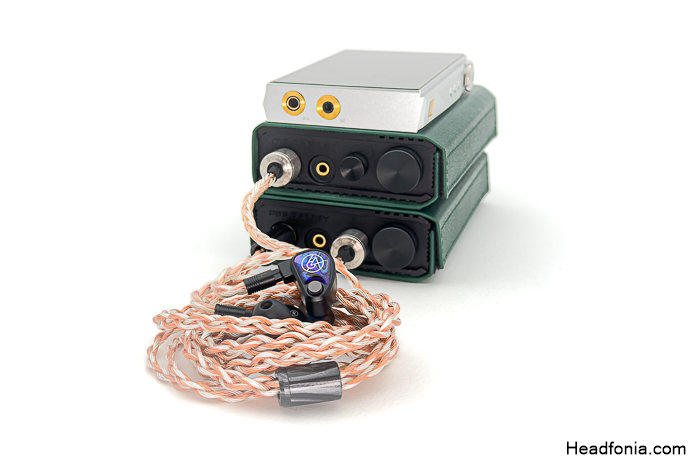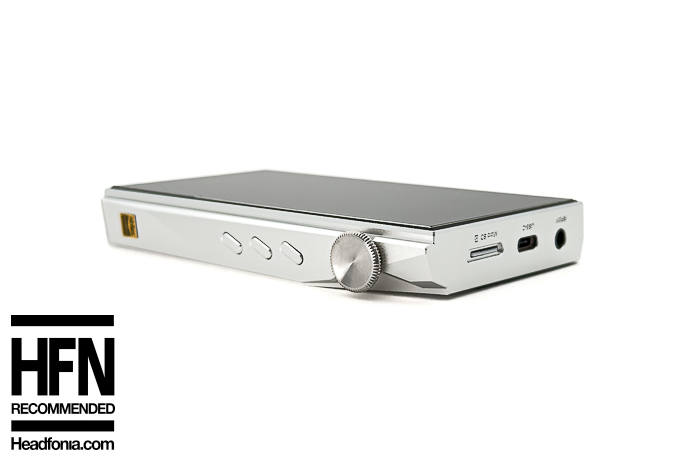If Google is showing you this page directly, click here to go to the start of the article.
iBasso DX260 – Sound Impressions
My unit is around the 200-hour mark, and I have used my daily-use IEMs to evaluate it. Those are Sennheiser IE600, Symphonium Crimson, and 64Audio U4S and Volur. These 30-year-old ears can still hear up to 17,5-18kHz, and as you may have noticed from the IEMs listed above, I like my high treble (14-15kHz) extension.
After spending three months with the iBasso DX260, I can confidently say it’s been quite the journey. When I first got my hands on it, I was curious to see how it would perform, especially since it’s positioned and named interestingly. The 200-series usually reflects iBasso’s mid-to-high-end bracket, and the latest DAP I used from iBasso was the DX220 before the DX180 and DX260 duo.
In a nutshell, the DX260 is a neutral and transparent DAP with a very clean signature. It’s one of the most reference\neutral DAPs I’ve ever tested. Now, “neutral” can sometimes be a hit-and-miss concept thrown around carelessly, but in the case of the DX260, the word perfectly describes what I am hearing. The tonal balance and timbre accuracy is the highlight of this DAP. What really got me hooked was how the DX260 manages to be so neutral and transparent without sounding clinical or lifeless\dry. There’s a slight warmth to the mid-bass that adds a feint layer of musicality to its neutral character. The presentation feels accurate and transparent but still carries emotion, which is a tricky balance to achieve.

Bass
Let’s talk about the bass. The DX260 delivers deep, well-extended lows with excellent definition. It’s punchy and tight, providing impact without muddying up the midrange. The layering is impressive, and you can effortlessly distinguish between different bass instruments and low notes. The mid-bass is prominent and has a good texture when the tracks require it. Whether I’m listening to the complexly layered bass lines in jazz tracks or the deep sub-bass extension in electronic music, the DX260 handles it with agility.
Midrange
The midrange is where the DX260’s realism and neutrality come from. The vocals and instruments are reproduced with remarkable clarity and transparency. Every note, every string carries excellent detail retrieval. Instruments like guitars, pianos, and strings have a realistic timbre that feels authentic. The resolution is very impressive, especially in this price bracket. The upper midrange is energetic, clean, and clear, with excellent dynamism.
Treble
High frequencies are handled with grace. The treble is expansive and energetic. The treble tuning is as transparent as the upper midrange, making the transition and balance coherent. Cymbals crash and disperse with realism, and high-hats sizzle just right – quantity-wise. There’s a good amount of air and extension, which improves the presentation’s overall sense of space and airiness. The DX260 manages to extract a lot of detail in the highs without causing the treble to sound lighter in timbre or sibilant.

Technical Capability
One of the aspects that left me pleasantly surprised is the soundstage. The DX260 offers a wide and expansive stage, especially with IEMs that have Tia drivers such as U4s or Volur. I find those pair beautifully with the DX260. The headroom stretches out nicely both horizontally and vertically. It feels more spacious than Sony’s WM1AM2 and iBasso’s DX180. There’s also decent depth, enhancing the holographicality of the perceived stage. Imaging is precise, too; you can pinpoint the position of instruments and vocals with ease.
From a technical standpoint, the DX260 holds its ground against rivals admirably. It’s transparent and resolving, considerably more so than the R6 Pro II, for example. However, it’s not an analytical DAP that shoves micro-details in your face. Instead, it integrates them naturally into the music, enhancing the overall signature without taking away the musicality. The background is black, allowing the details to shine without any unwanted noise or hissing.
Despite its compact size, the DX260 packs a serious punch when it comes to power. It’s capable of driving a wide range of headphones with its strong output.(Capable of providing around 1000 mW into 32 ohm load) I tested it with everything from sensitive IEMs like the Volur to more demanding over-ears like the Sennheiser HD58X and Hifiman Ananda Nano. This makes it incredibly versatile and suitable for both IEMs and full-sized headphones if you want a one-device solution for all your problems.

vs. iBasso DX180 ($529 USD)
So, let’s put the DX260 and DX180 side by side and see how they stack up. The first thing you’ll notice is that the DX260 has superior hardware. It ramps up with its flagship Octa-DAC configuration, using eight Cirrus Logic CS43198 DAC chips. In contrast, the DX180 sports a Quad-DAC setup with four CS43131 DACs. Essentially, the DX260 doubles the DAC power, aiming for even higher fidelity and resolution.
Under the hood, the DX180 comes with a Snapdragon 665 processor, 4 GB of RAM, and a slightly more generous 128 GB of internal storage, running on Android 13. The DX260, meanwhile, uses a Snapdragon 660 processor with the same 4 GB of RAM but 64 GB of storage, operating on Android 11. So, the DX180 has a slight edge in processing power and storage capacity, and it is running a newer Android version.
Both of the devices have similar battery life and playback durations according to my usage conditions. I get around 10 to 11 hours from both using max FIR setting and low gain. The DX260 is a better in output power, delivering 1015mW @ 32Ω from its balanced 4.4mm output, surpassing the DX180’s 690mW @ 32Ω.
Physically, the DX260 is slightly heavier at 229g versus the DX180’s 206g and is marginally thicker. Both devices feature iBasso’s FPGA-Master 2.0 system controller and support fast charging via QC3.0 and PD3.0. They also share similar connectivity options like Bluetooth 5 with LDAC support and dual-band Wi-Fi.
Now, onto the fun part: the sound. Both the DX260 and DX180 carry iBasso’s signature for neutrality and transparency but differ in technical capability.
The DX180 offers a neutral-warm sound signature. It has a touch of sub-bass emphasis that adds a pleasant warmth without overshadowing the mids or highs. The treble is smooth yet extended, making for an engaging and musical experience. It’s the kind of player that adds a bit of character to your music without straying too far from neutrality.
On the other hand, the DX260 feels more neutral and more transparent while delivering superior detail retrieval and resolution. The DX180 shows some warmth in the sub-bass region, while the DX260 is exceptionally transparent without coloration and showcases a better technical foundation. The soundstage is notably wider on the DX260, with more precise imaging and slightly better separation than the DX180.
For the price, I find DX180 quite great, and while the performance jump is not the same as double the price up, DX260 still presents a step up, especially in the technical capability realm. However, DX180’s price-to-performance ratio is tough to beat.

Pairings
iBasso DX260 + iBasso D16 Taipan + iBasso PB5 Osprey (SPDIF + iBasso 4.4mm to 4.4mm)
This stack is what I like to call the “iBasso high-rise,” and it’s a powerhouse. Using the D16’s coaxial mode and the included SPDIF cable with the DX260 results in an even cleaner background. To my ears, the D16’s coaxial input slightly outperforms the USB input in terms of resolution and transparency, and adding the PB5 further improves the upper midrange and high treble detail retrieval. Take what I said above and add this paragraph at the top. The description I’d use is utterly impressive.
With IEMs like the 64 Audio Volür and Soundz Avant and headphones like the Ananda Nano, this setup just delivers. The soundstage feels wide, the timbre is musical, the detail retrieval is impressive, and the PB5’s organic touch is the icing on the cake. That said, carrying this stack around is another story. It’s a transportable setup at best, so unless you want curious stares at airport security, I’d recommend leaving it at home for stationary listening or getting a t-shirt that says, “No, this is not a bomb; it’s just my music player.”
iBasso DX260 + iBasso PB5 Osprey (iBasso 4.4mm to 4.4mm)
The DX260 is a clean-sounding DAP that feels neutral and linear. I like it a lot because of its ability to extract detail from the tracks. Introducing the PB5 into the mix transforms the DX260, adding a layer of organic warmth, especially in the midrange and upper midrange. The PB5 positively affects the overall timbre, making it more relaxed and natural without messing with the excellent treble transparency of the DX260. The soundstage feels wider and deeper with better layering.
Bass impact is also noticeably enhanced, with better texture in the low-mids, adding a sense of weight and realism to instruments like drums and bass guitars. I like how the female vocals get a nice realism boost because DX260 can be too transparent at times, especially with suboptimal recordings. For those who are satisfied with their DX260 and want to be even more satisfied, I highly recommend at least trying this pairing.

Last Words
In the crowded market of digital audio players under the thousand-dollar mark, the iBasso DX260 stands out as a solid option. Its combination of reference signature, exceptional technical performance, and powerful output in a compact design makes it shine among its rivals. It’s been a joy getting to know this player, and it has quickly become my go-to source when I don’t want to carry the D16 + PB5 stack or my Hugo 2. For any audiophile seeking a high-quality DAP that delivers on sound and functionality, the DX260 is a solid choice that’s hard to overlook. To the recommended list it goes!
Summary
Pros:
+ Impressive detail-retrieval
+ Excellent SQ
+ Solid technical capability
+ Excellent build
Cons:
– Accessories could be better (especially the films and the case)
Page 1: iBasso, DX260 DAP, Packaging & Accessories, Design & Build Quality, iBasso Cares
Page 2: Audio Circuitry & FPGA-Master 2.0, Software & User Experience, Mango OS, Battery Life, Bluetooth and WiFi Performance
Page 3: iBasso DX260 Sound Impressions, Technical Capability, Comparison, Last Words











Robert Snow
The first time the author mentions Mango OS he says he wasn’t able to discern a major difference in performance compared to Android OS: “The Mango OS, in theory, offers better performance compared to the Android OS, but I was not able to discern a major difference, to be honest.” But then a few paragraphs later he says: “Another option is to use the Mango OS directly, which offers a superior UI and faster operation, in my experience.”
Nevertheless, thanks for the review.
Yagiz
Hello Robert,
MangoOS is a much lighter operating system compared to Android. However, since the device has a powerful CPU and a comfortable amount of RAM, iBasso’s Android implementation runs quite well, making the difference in performance less discernible in my experience.
The second quote is from a section where I compare the MangoPlayer app running within Android OS to the standalone MangoOS. While MangoPlayer app shares the same GUI and overall look, it feels slightly less optimized due to gestures somehow feeling more sluggish compared to MangoOS. In contrast, MangoOS provides a smoother and faster experience due to better integration.
Hope this has been explanatory.